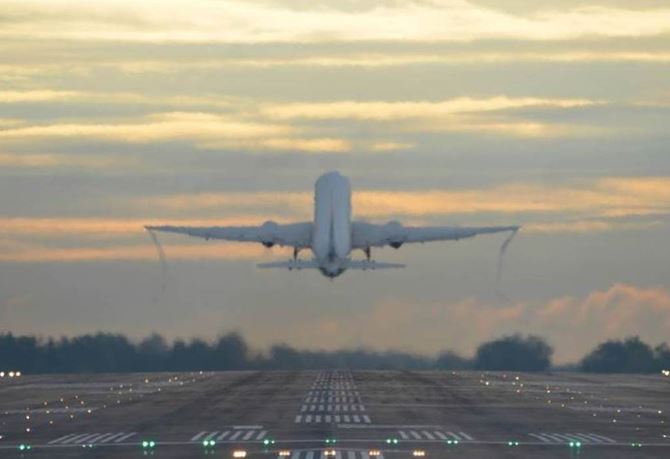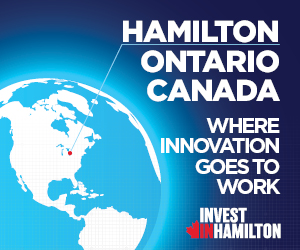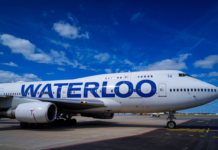
Business is Global and Global Businesses have it all in Hamilton, Ontario, Canada.
The city checks all the boxes: a location that delivers access to talent and key markets; multi-modal transportation options; an investment ready mindset; and a welcoming, diverse and inclusive community.
“Hamilton has a great value proposition in what it offers to companies coming here,” said Jennifer Patterson, senior business development consultant in investment and trade for the City of Hamilton.
“We complete the circle from idea to manufacturing to transportation. No other city in our province has what we have.”
Strong Talent Pool
Hamilton has a local workforce of 400,000 people and is at the heart of Canada’s most populous labour pool. There are close to 8 million workers within a 100-km radius.
Hamilton is home to McMaster University and the Mohawk College, which together have more than 60,000 students. There are dozens more colleges and universities within a two-hour radius of the city.
True Multi-Modal City
Hamilton is among Canada’s true multimodal cities, offering:
• A 24/7 international airport that is the country’s busiest overnight express cargo hub and the fastest-growing airport in Canada;
• The busiest port on the Canadian side of the Great Lakes;
• An unparalleled access to highways within 60 minutes to Canada’s largest city and south to the U.S. border and;
• Excellent connectiveity to both CN and CP rail lines.
“The transportation connections available to industry in Hamilton are truly second to none,” said Ian Hamilton, president and CEO of the Hamilton Oshawa Port Authority.
“Businesses locate here because they know they can get their products to market using the right mode of transportation at the right time. The flexibility to use marine, rail or highway transportation depending on their immediate needs has enormous value for supply chain efficiency.”
Hamilton’s Quality of Life
Hamilton has the amenities of a big city without the hassles and high prices that plague larger cities. It offers great schools and hospitals, plenty of parks and natural spaces, the most waterfalls in the world, and plenty of urban excitement.
“Hamilton has all the assets of a tier one city when it comes to culture and dining and entertainment,” said Patterson.
“You can live in a downtown condo, one of Hamilton’s small towns or on a farm. The city offers plenty of nature, alongside an authentic city scape of heritage buildings.”
Diverse and Dynamic
Hamilton is a highly diverse city that continues to grow thanks to the arrival of immigrants from all over the world.
The Hamilton Immigration Partnership Council (HIPC) seeks to create a seamless settlement experience for immigrants in Hamilton, by bringing together partners from settlement, education, business, health, social services, municipal affairs, and persons with lived immigration experience.
HIPC was established in 2009 as one of Canada’s first local immigration partnerships, a network that has now spread across the country and includes more than 75 similar local initiatives. HIPC is housed within the City of Hamilton’s Economic Development Division – a unique model – and funded by Immigration, Refugees and Citizenship Canada.
“Our pitch is simple: from attraction to integration, we’ve got you all the way,” said Sarah Wayland, senior project manager at HIPC.
HIPC is co-located with the Global Hamilton initiative, which is focused on attracting international investment, business, entrepreneurs and talent.
“Global Hamilton and HIPC have two distinct objectives – one focuses on attraction of immigrants and investments and one seeks to improve the settlement experiences and sense of belonging among newcomers – but in effect both work together to create an attractive reception for newcomers and the supports that help them succeed here.”
One initiative launched in the fall of 2020 was the Essential Immigrants campaign, a social media video series highlighting the role of immigrant professionals during COVID-19. The series features six essential workers of different professional and ethnic backgrounds, each serving Hamilton in different ways during the pandemic. The first video highlights Priscilla Clarence, a registered nurse at a Hamilton hospital who came to Canada 10 years ago as an internationally-trained professional from India.
Hamilton International Airport (HIA)
With runway and airside infrastructure capable of handling aircraft of all sizes, 24/7 unrestricted operations, six dedicated cargo sort and handling facilities, maintenance, repair and overhaul (MRO) facilities, and developable land available on and around the airport, HIA is an economic engine in Hamilton.
“Its strategic location and uncongested operations make it an attractive option for companies looking to serve the southern Ontario market,” said HIA president and CEO Cathie Puckering. “As a gateway for facilitating goods movements across Canada and around the globe, the airport offers safe and secure facilities for its 24/7 operation while partnering with key cargo companies including Cargojet, DHL, UPS along with Amazon, Canada Post and Purolator.”
HIA has responded to an unprecedented surge in e-commerce driven by the pandemic, along with demand for essential medical supplies and personal protective equipment (PPE). Through September, cargo activity increased 20 per cent over 2019 and cargo landings grew 10 per cent.

DHL Express is building a $100-million airport logistics facility in Hamilton
The airport continues to invest in strategic infrastructure projects, including a four-year rehabilitation and modernization of its airfield. DHL Express is also completing a $110-million gateway facility that will be its largest in Canada, and KF Aerospace expanded its MRO facility at the airport to handle wide-body aircraft and to train future talent at the Mohawk College Center for Aviation Technology.
Amazon arrival
Amazon Canada announced in September that it is creating a fulfilment centre next to HIA and a 50,000-squarefoot delivery station within Hamilton. The 855,000-square-foot fulfilment centre represents one of the largest local investments in terms of square footage in the city’s history. These investments in Hamilton’s goods movement sector will bring more than 1,500 new jobs when the facilities are scheduled to open in 2021.
Amazon’s arrival to the Airport Employment Growth District (AEGD) solidifies Hamilton’s position as a North American Gateway hub for logistics, distribution and goods movement.
“We are thrilled to be the key player in bringing this investment to Hamilton,” said Adam Lambros, development manager with Panattoni Development Company.
“Panattoni Development Company started developing in Hamilton because we believe in this city’s growth potential, we believe in Hamilton’s people and we believe in the plan for the Airport Employment Growth District.”
Hamilton Oshawa Port Authority (HOPA)
2020 has been one of the biggest investment years ever by HOPA, with more than $29 million in capital projects underway, says president and CEO Ian Hamilton.
The port is essential to Hamilton’s Food and Beverage Manufacturing sector, which has grown exponentially and employs thousands across the city. It is now its second largest manufacturing sector, responsible for $1 billion in economic activity in the region. The port’s agri-food hub exports Ontario grain, mills flour, brews beer, and specializes in the handling of organic sugar.
“These companies take advantage of Hamilton’s unbeatable location for reaching North American and international markets, and tap into its top- notch labour force, with the skilled people that manufacturers and industrial operators need,” said Hamilton.
HOPA has new development opportunities available thanks to a massive modernization project that has made one of the oldest areas of the port now development-ready, says Hamilton. “The Westport modernization project invested $35 million in new dockwalls, rail extensions and roadway infrastructure to improve service to our existing tenants, and create space to attract new ones.”
Those investments are already paying off in the expansion of tenants’ warehousing and terminal facilities.
Looking ahead a couple of years, an additional 14 acres will be available for marine berthage and industrial space at the area of the Randle Reef sediment containment project.
















